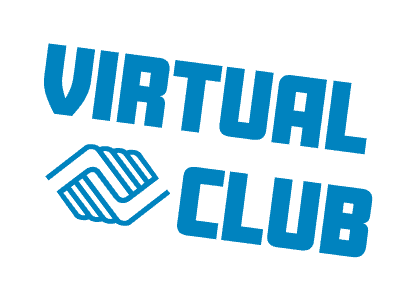Some of the links below are affiliate links, which means we will earn a commission for qualifying purchases, at no additional cost to you.
How much do you know about Native Americans, especially those who are alive today? Did you learn about Native Americans in your history class?
According to research from Reclaiming Native Truth, nearly 87% of state history standards for schools in 2011-2012 failed to cover Native American history post-1900. Twenty-seven states did not name any individual Native Americans in their standards at all.
Aside from these history lessons, many people have probably learned about Native Americans through movies, TV shows, or even sports mascots. Most of the people telling these stories — the writers, directors, and producers — are not Native, yet they shape how the population views Native people, sometimes using stereotypes or caricatures.
This November, for Native American Heritage Month, we’re celebrating the rich and diverse traditions, histories, and contributions of Native people. There are more than 500 Native Nations in the United States, all with their own unique identities and cultures.
To help you out, we’re recommending 5 books for kids and teens, each relating to a different aspect of Native American culture, all written by Native authors:
Fry Bread: A Native American Family Story
*Recommended for ages 2-6
Fry Bread: A Native American Family Story is a picture book written by Kevin Noble Maillard, a member of the Seminole Nation of Oklahoma, and illustrated by Juana Martinez-Neal.
This book depicts a modern, intergenerational Native American family preparing a food known as fry bread together. Fry bread is a type of dough-based flatbread that is deep-fried until it becomes crispy and golden brown.
The origin of fry bread began in 1864, when thousands of Navajo people, who had been living in what is now Arizona, were forced by the U.S. government to walk 300 miles to camps in New Mexico, in a journey known as the “Long Walk.” They no longer had access to their land, where they grew fruits, vegetables, and other crops, so the government gave them flour, processed sugar, and lard, which the Navajos used to create fry bread.
Fry Bread: A Native American Family Story celebrates fry bread as a symbol of resilience and perseverance for Native American people. It also shows how passing down a family recipe can connect different generations and bring families together.
Purchase Fry Bread: A Native American Family Story on Amazon
Jingle Dancer
*Recommended for ages 4-8
Jingle Dancer is a picture book written by Cynthia Leitich Smith, a citizen of the Muscogee (Creek) Nation, and illustrated by Cornelius Van Wright and Ying-Hwa Hu.
The story is about a young Muscogee girl in Oklahoma named Jenna who wants to honor a family tradition by jingle dancing at the next powwow. Jingle Dancer follows Jenna’s journey as she prepares for the dance.
The jingle dance originated as a healing ritual in the early 1900s with the Mille Lacs Band of the Ojibwe Tribe, before being shared across regions and spreading to other Native Nations. Women and girls jingle dance wearing metal cones attached to their regalia, which produces a distinctive jingling sound when they move, hence the name.
The jingle dance is done not as entertainment or a performance, but instead, as a ceremonial dance that acts as a prayer. As Jenna prepares for the powwow in Jingle Dancer, her family and community are there to help her participate in this meaningful ceremony.
If You Lived During the Plimoth Thanksgiving
*Recommended for ages 7-10
If You Lived During the Plimoth Thanksgiving was written by Chris Newell, a citizen of the Passamaquoddy Tribe at Indian Township, and illustrated by Winona Nelson, a member of the Leech Lake Band of Ojibwe.
This nonfiction picture book tells the “first Thanksgiving” story from a Native perspective. Most accounts children learn about this historical era begin with the Mayflower arriving in the “New World.” If You Lived During the Plimoth Thanksgiving, however, centers the narrative on the people who already lived there.
When the Mayflower reached land in 1620, the pilgrims arrived in Wampanoag territory at the village of Meeshawm, in what is now known as Provincetown, Massachusetts. In 1621, the leader of the Wampanoag Nation, Ousamequin, and the governor of the Plimoth Plantation, William Bradford, agreed to an alliance.
Did You Know? Although the modern town is spelled as “Plymouth,” Governor Bradford and the other colonists named their settlement “Plimoth Plantation.”
If You Lived During the Plimoth Thanksgiving tells the true story of the Thanksgiving that took place in 1621, with additional context to facilitate a deeper understanding of the holiday. The book discusses some of the differences between the Wampanoag and the settlers, such as the way they viewed currency and land ownership.
Purchase If You Lived During the Plimoth Thanksgiving on Amazon
Deb Haaland: First Native American Cabinet Secretary
*Recommended for ages 9-14
Deb Haaland: First Native American Cabinet Secretary is a biography by two Native scholars: Jill Doerfler, a member of the White Earth Nation, and Matthew J. Martinez, a member of the Ohkay Owingeh Pueblo.
Deb Haaland made history in 2021 when she became the first Native American to serve as a cabinet secretary.
A cabinet secretary refers to a member of the Cabinet of the United States, which consists of the vice president and the heads of various executive departments, such as the Department of Defense and the Department of State. These departments are responsible for advising the president on specific areas of government.
Secretary Haaland, who is a member of the Pueblo of Laguna, serves as the Secretary of the Interior. This means she is responsible for managing the nation’s public lands, including national parks, monuments, and wildlife refuges, and overseeing the U.S.’s relationships with Tribes.
This biography teaches readers about the early life and political career of Secretary Haaland, and it also showcases the importance of representation. Native youth who read this book will see someone who looks like them doing significant work in a high-level role.
Purchase Deb Haaland: First Native American Cabinet Secretary on Amazon
The Marrow Thieves
*Recommended for ages 12+
The Marrow Thieves is a young adult novel written by Cherie Dimaline, a member of the Métis Nation of Ontario.
The Marrow Thieves takes place in a dystopian future after humanity has nearly destroyed the world through global warming, and most of the population has lost the ability to dream. The only people still able to dream are the Indigenous people of North America, who are being hunted for their bone marrow, which is believed to be the key to their dreams.
In the novel, Frenchie and his friends are hunted by what they call the Recruiters. The Recruiters plan to take them to schools to extract their bone marrow.
These schools are a direct reference to the Native American boarding schools of the late 1800s and early 1900s. During that time, the U.S. and Canada established these schools (often called “residential schools,” especially in Canada) for the express purpose of assimilating Indigenous students. Indigenous children were forcibly removed from their families to be taken to these schools, where their identities were erased.
Though The Marrow Thieves is a fictional novel set in an imagined future, its content and themes will resonate with anyone who knows the history it references.
We hope these books can help guide you and your kids as you learn more about Native American cultures, both past and present. Hear stories from a variety of Native American voices to learn even more about these diverse people and their complicated histories. Happy Native American Heritage Month!














